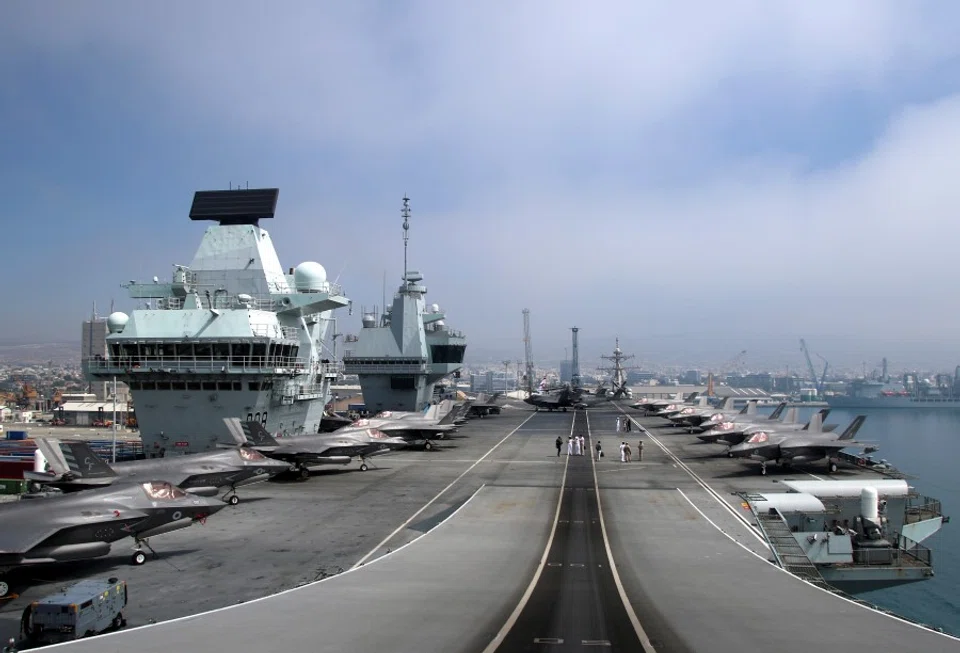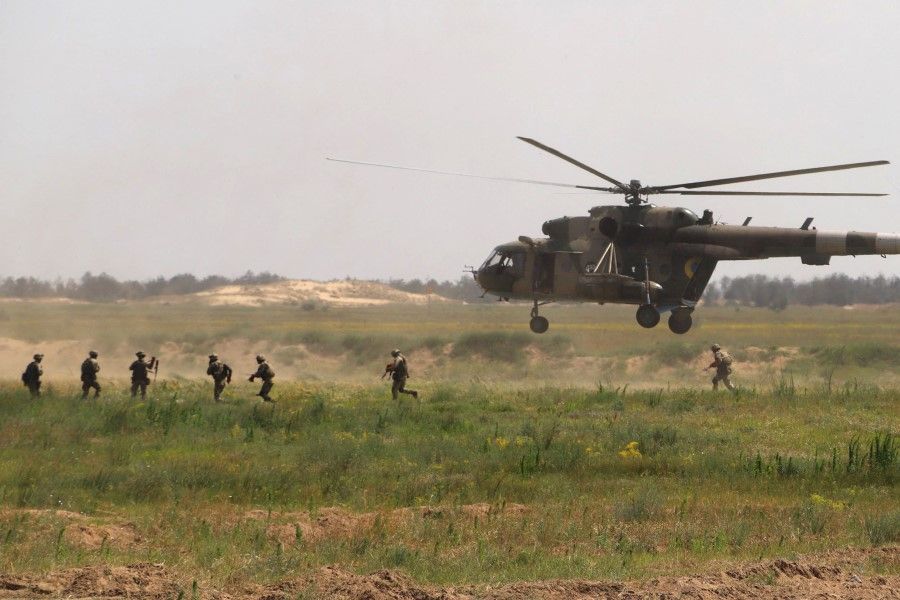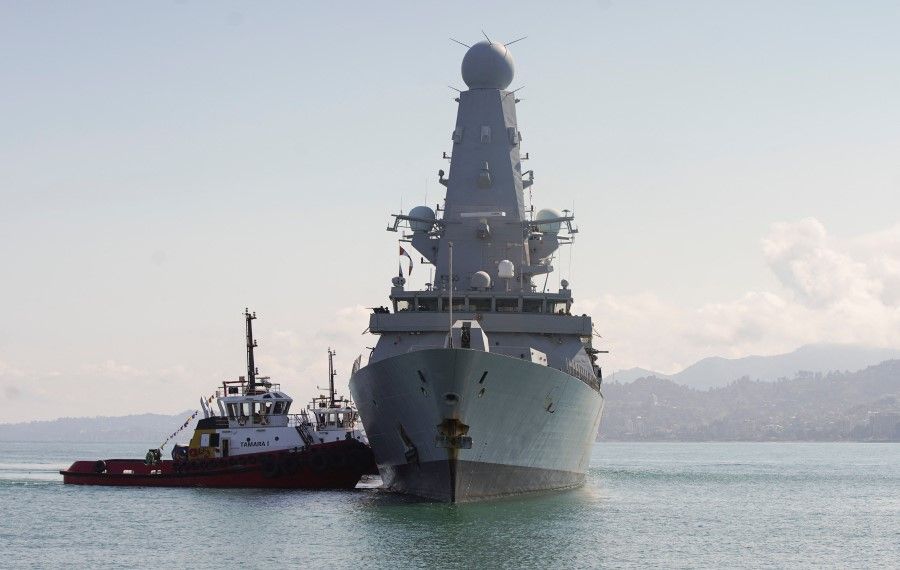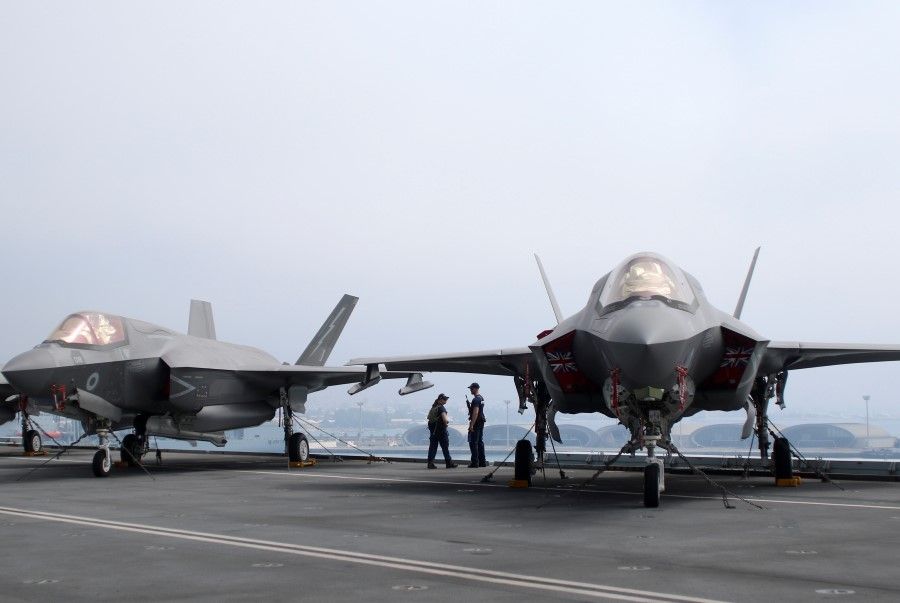Will the UK's Royal Navy conduct a freedom of navigation operation in the South China Sea?

On 23 June, the Royal Navy (RN) destroyer HMS Defender had a tense encounter with the Russian military off the Crimean coast in the Black Sea.
British and Russian accounts of the incident differ markedly.
According to Moscow, the Russian military "expelled" the British warship from the country's territorial waters by firing warning shots and dropping bombs close to the vessel.
Not so, said London. HMS Defender had exercised "innocent passage through Ukrainian territorial waters in accordance with international law". The "warning shots", London added, were from a nearby gunnery exercise being conducted by the Russians and no bombs were dropped.
Russia seized Crimea from Ukraine in 2014, but the UK, along with many other Western countries, refuses to recognise the legality of the occupation.
HMS Defender is part of the Royal Navy's Carrier Strike Group-21 (CSG21), which will pass through the South China Sea within the next few months.

The event is significant for two reasons.
First, the right of innocent passage is enshrined in the United Nations Convention on the Law of the Sea (UNCLOS), so long as a ship's passage through territorial waters is "continuous and expeditious" and "not prejudicial to the peace, good order or security of the coastal State".
Unlike China, neither the UK nor Russia requires warships to seek prior permission before conducting innocent passage.
Yet Russia condemned HMS Defender's actions as "provocative and dangerous" and a violation of its sovereignty -language employed by China when protesting US Navy freedom of navigation operations (FONOPs) in the South China Sea. Russia's response was therefore inconsistent with its longstanding position and more in line with China's interpretation of UNCLOS.
Second, HMS Defender is part of the Royal Navy's Carrier Strike Group-21 (CSG21), which will pass through the South China Sea within the next few months. CSG21 set sail from England in May and packs a formidable punch: it consists of the aircraft carrier HMS Queen Elizabeth (embarking 18 British and American F-35B fighter jets), two British and one American destroyer, two British and one Dutch frigate, two RN support ships and a submarine.
Will one or more of these vessels conduct a FONOP in the South China Sea? Odds are they might.
Since 2017, British ministers had been saying that HMS Queen Elizabeth's maiden operational voyage would include the Asia-Pacific and that part of its mission would be to assert freedom of navigation rights in the South China Sea.
Australian warships have come close to the 12nm limit; French warships have sailed near to the disputed Spratly Islands; while Japanese warships tend to give them a wide berth so as not to provoke a Chinese counter-response...

In August 2018, HMS Albion became the first non-American warship to conduct a US-style FONOP in the Paracel Islands, much to China's chagrin. The US conducts such operations to challenge what it deems to be excessive maritime claims (as HMS Albion did) or the prior notification requirement (as HMS Defender did). Many FONOPs involve warships sailing within the 12 nautical miles (nm) territorial sea limit of an island feature.
No other foreign warship has done so, at least publicly. Anecdotal evidence suggests Australian warships have come close to the 12nm limit; French warships have sailed near to the disputed Spratly Islands; while Japanese warships tend to give them a wide berth so as not to provoke a Chinese counter-response in the already tense waters surrounding the Senkaku/Diaoyu Islands in the East China Sea.
In March 2021, the UK government published a landmark strategic policy paper that signalled a "tilt" to the Indo-Pacific and labelled China a "systemic challenge". The paper identified the preservation of freedom of navigation as "essential" to Britain's national interests and reiterated its "absolute commitment" to upholding UNCLOS.
In the case of the Black Sea incident, Britain seemed prepared to put its money where its mouth is. A few days after it occurred, secret documents found at a bus stop revealed that senior defence officials had discussed two possible routes HMS Defender could take and how each might be perceived by Moscow. While the most direct route that was chosen risked an assertive response from Russia, the more circuitous one might have been viewed by Moscow as a sign of British faintheartedness.
The RN could further raise China's ire by sailing through the Taiwan Strait en route to South Korea and Japan. How will China respond?

All of the above suggests that Britain appears determined to assert freedom of navigation rights when CSG21 enters the South China Sea.
It's quite possible, therefore, that an RN destroyer or frigate will sail within 12 nm of one of China's seven artificial islands in the Spratlys, alone or accompanied by the US destroyer that is part of CSG21. The RN could further raise China's ire by sailing through the Taiwan Strait en route to South Korea and Japan.
How will China respond?
In January, when questioned about CSG21's forthcoming trip to Asia, China's defence ministry said it would "take necessary measures to safeguard its sovereignty, security and development interest" in the South China Sea.
In practice, this means that CSG21 will, at the very least, be closely shadowed by Chinese naval ships and aircraft from the moment it enters the South China Sea and subject to verbal warnings to leave the area.
Whether the Chinese military leaves it at that or takes more assertive actions to show European countries that their presence is not welcome - as Russia did in the Black Sea with the British and Dutch warships that form part of CSG21- will be closely watched.
This article was first published by ISEAS - Yusof Ishak Institute as a Fulcrum commentary.
Related: Apart from ASEAN and China, international community and law are part of South China Sea discourse | Japanese academic: Biden must not underestimate China's maritime ambitions | What does the high-profile launch of three new PLA warships tell us? | India in the Indo-Pacific: Reining in China in the new theatre of great power rivalry
